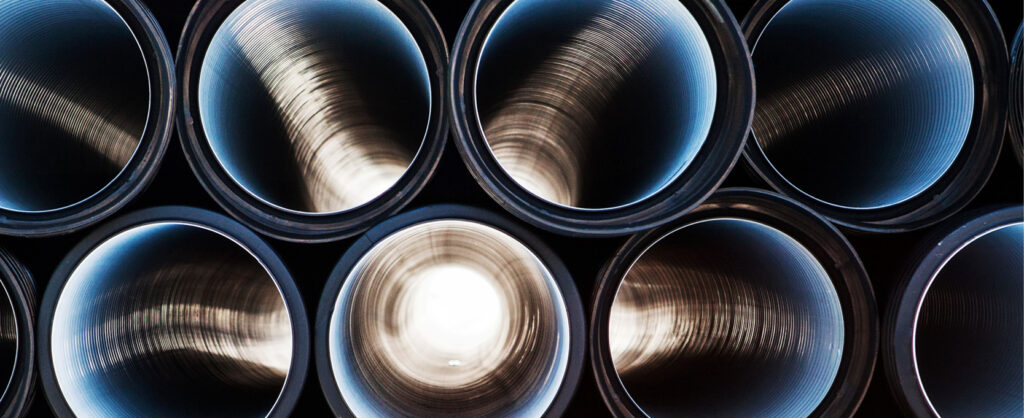
SHARE
Replacement and Repairs Exceed Budgets. Proactive Asset Management is the Solution.
- By: Chris MacDonald, President and CEO
Take a look at recent reports from AWWA, ASCE, or other well-respected organizations in the water/wastewater industry that are advised by some of the most knowledgeable people. The future is dire.
ASCE 2021 Report Card states:
- Water main break occurs every two minutes, with an estimated six billion gallons of water loss daily.
- 16,000 wastewater treatment plants are functioning, on average, at 81% of their design capacity.
- 15% of wastewater treatment plants have reached or exceeded capacity.
Over the past century the management of critical buried infrastructure has seen relatively slow progress and innovation. This is mostly due to a lack of inspection technologies that can provide insights into the condition of pipes. Over 25 years ago several technologies were introduced, but the clarity they provide has seemed to diminish rather than improve over that same period. For example: Inspection technologies reported actual breaks or specific defects, however over time the information became broader and more general. When evaluating technologies over some time you generally expect to see it become more exact vs. more general, however that has not happened. At the same time there were entities who made exaggerated or false claims about having all-encompassing insights, requiring utility managers to engage in a critical thought process prior to utilizing inspection technologies.
With a limited number of inspection options, utilities were left to make massive investment decisions with minimal information. The information they could obtain was often through desktop modeling, and across different regions or municipalities has proven weak at best. The lack of quality inspection data led to decision-making based on catastrophic failures, break history, soil conditions, pipe type and size, proximity to other utilities, and other non-specific data points that were subjective in nature. In addition, most of the data that was available was for a limited inventory pool that consisted of large-diameter bar wrap, prestressed concrete cylinder pipe, or other metallic pipes like ductile iron, cast iron or steel.
The previously mentioned drivers still account for the information used in a minimum of 90% of utility managers’ decisions. Some might argue that over 95% of the decisions are still based on these data points, or more accurately, pressure points. If asset management continues with lack of progression and innovation with inspection technologies, catastrophic failures could occur more frequently, in turn, causing budgets to fall catastrophically short.
The current useful life of existing assets needs to be addressed. If a supplier claims to offer a 100-year design life, and the critical buried infrastructure that requires full replacement was installed 45 years ago can you trust the same supplier? The response should be a resounding NO! However, there are conversations evaluating new approaches and technologies that question a 100-year design. If the renewal efforts are given conservatively and support a 50-plus-year design life, and the pipeline considered for full replacement provided 45 years of service, the renewal option should be seriously considered based on costs.
A crucial point to consider is whether the entire span of pipeline, is in fact, in need of full replacement, or could specific locations be rehabilitated. With that in mind, what inspection technologies existed 10 years ago that could provide accurate data for buried PVC, metallic, composite or AC pipeline? There are considerations related to how the different pipe types fail, or show signs of potential future premature failures. Do PVC pipes and metallic pipes fail similarly? If not, what causes each to deteriorate or degrade over time, and what are the primary causes of these types of failure mechanisms?
Metallic pipes tend to fail from construction damage, corrosion, joint issues, liner failures that lead to pipe wall attack, H2S attack, erosion, and other causes. PCCP pipes tend to fail due to construction-related issues, embrittlement of the wires, degradation that occurs to the wire or steel can when the protective cement core or coating fail, issues at the joints where grout is improperly placed or fails prematurely exposing the metallic components it was meant to protect, and several other common mechanisms. Bar wrap pipes fail from common issues seen by both PCCP and other metallic pipes.
PVC pipes are completely different. PVC pipes tend to fail from stress in the wall of the pipe or on the joint. These stressors can result from joints that are deflected beyond the manufacturer’s recommendations; pipes that become oval beyond the engineered limits due to backfill and compaction; telescoped joints; separated joints from lack of necessary thrust restraint; or cyclic pressure which occurs over time and is typically used to determine the failure point of PVC pipes. Unless managers know what the specific, very measurable data points are when the pipe is installed, they are left in a constant cycle of rinse and repeat.

An interesting aspect about BWP and PCCP pipes, as well as other multi-layer or composite-type pipe designs: when they start to experience distress that could lead to failures, the different layers tend to delaminate. When the delamination begins to occur, an inspection technology with the ability to measure delamination with a high degree of accuracy can lead to analysis which results in remaining useful life.
In PVC pipes, most issues that lead to stress in the pipe occur from improper construction techniques and inspections. When you consider steps to take from an asset management perspective related to PVC pipes, the first question to ask is when it was installed and what breaks have occurred. In a 2019 study published in AWWA Journal written by Lawrence Wynn, Tucson Water inspector, gathered data related to the installation of PVC pipes. The study focused on developers in the area that didn’t always follow the same standard utilities recommended for PVC pipe installations. Developers installed pipes requiring radial bending to avoid purchasing a $50 fitting where the pipe alignment changed direction. This resulted in over deflected and telescoped pipe joints that failed prematurely.
The data showed that over 10 years the number of failures per 100 miles of pipe would peak at a specific rate. From year 10 to year 30 the number of failures would lessen over time until finally flattening out near zero and then operating break-free for the next 50-80 years (at the time only 50 years of data was available). Why is this relevant? When installation data is considered, and the line is PVC, and installation occurred over 30 years ago, this is significant information based on published research. The next question should be why do you want to inspect this pipe? In theory, every issue related to construction at this point has worked itself out, and most likely all failures that were going to occur on that pipe have occurred.

Asset management is going to look different for different pipe types and sizes, and depend on available budgets. Asset management doesn’t have to be sophisticated and technical, and often times simple is better. What is crucial, is that the utility has a plan based on varying factors, data points that can be collected, complexity associated with collecting the data, and consider the difference between capital expenditures and operating expenditures when developing an asset management program. For example, if capital expenditure for replacing a pipeline is $100 million, and $1 million can be allocated for pipeline improvements, such as valve replacements and inspection ports; it’s financially smart to transfer $2 million from capital to operating expenses to allow inspections to occur prior to decisions being made. This would maintain a budget for inspections, including desktop analysis, survey-level field data collection, high-resolution field data collection, and analysis. The utility benefits from this proactive approach recognizing where capital spending is key and where operational spending is key, maximizing budgets.
Remember, every type and size pipe will require a different approach, but can be part of the same overall management program. Not every distribution pipe from 4- to 12-inch needs to be inspected, however at the same time they all don’t need to be replaced. There are ways to prioritize with or without field data.





